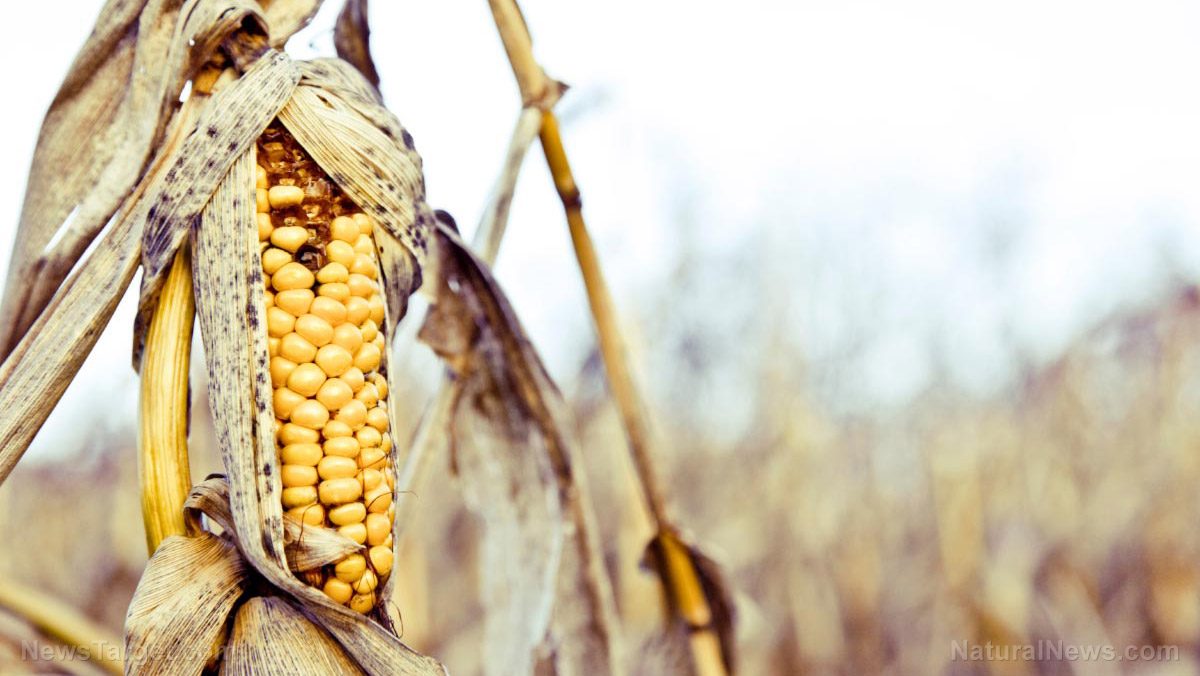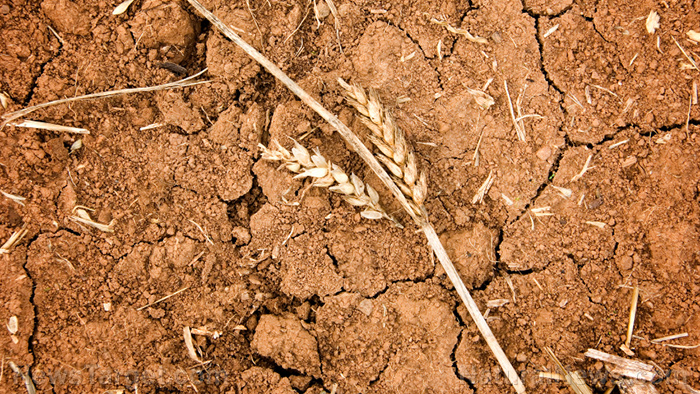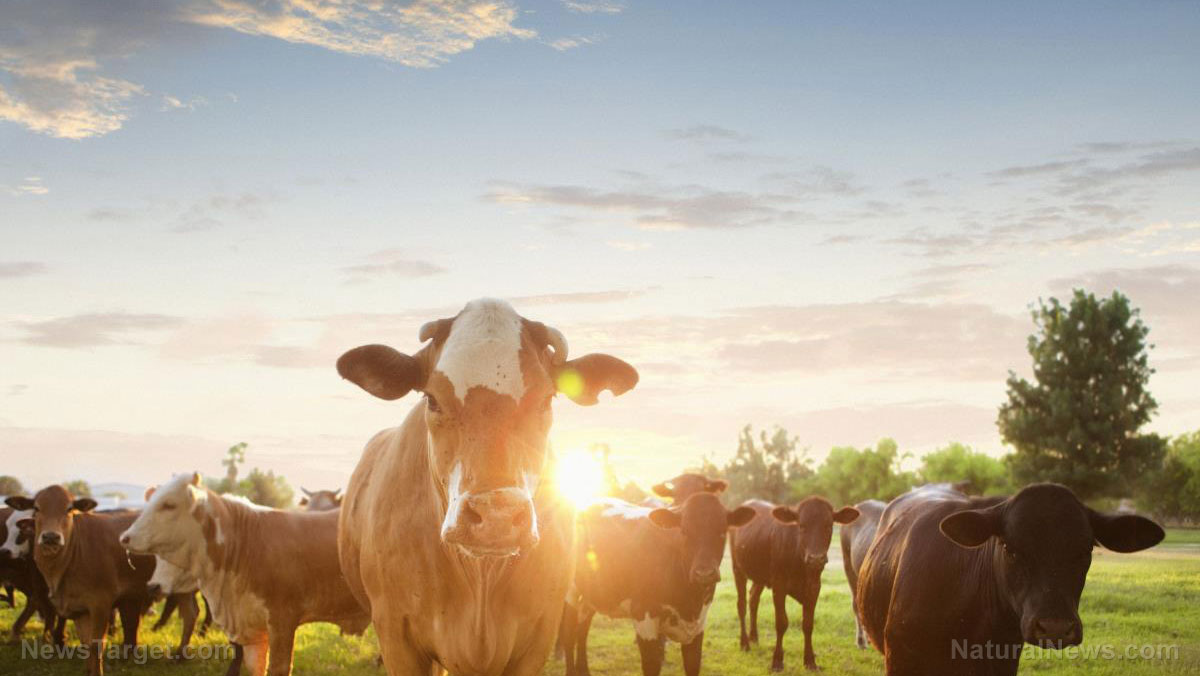
On August 10, the “Great Derecho” storm damaged 10 million acres of crops in Iowa, resulting in an increase in corn prices. Not one month has passed and a lack of rainfall in the Midwest has once again caused a surge in crop prices.
Low rainfall and the Great Derecho
Data from the Department of Agriculture (USDA) warns of further deteriorating crop conditions.
Farmers have already expressed their concern over a lack of rainfall in August, which caused an increase in corn prices, which have increased by nine percent for the past two weeks. Since the start of the week, benchmark corn prices have gone up by at least four percent at $3.39 for one-fourth of a bushel.
This is alarming as prices have already increased on August 10, Monday, after a weather complex called a “derecho” destroyed crops in Iowa, one of America’s key corn-growing states. (Related: “Great Derecho” storm just destroyed crops, grain stores all throughout the Midwest.)
According to the National Oceanic and Atmospheric Association, a derecho “is a widespread, long-lived wind storm associated with a band of rapidly moving showers or thunderstorms.” These weather systems are known to cause just as much damage as tornadoes. However, while the latter features spiraling winds and move in a winding path, derechos usually move in one direction along a relatively straight line causing a relatively linear path of destruction.
On the evening of August 10, a derecho sent intense winds and thunderstorms over a 700-mile stretch starting from Nebraska to Indiana. This so-called “Great Derecho” had winds that reached 110 to 140 mph – as strong as those of a Category 3 or 4 hurricane.
Iowa was the hardest-hit state, with three deaths reported as of August 22. Hundreds of thousands of residents in Iowa didn’t have power for several days. Over 40 percent of Iowa’s corn and soybean crop, the crux of Iowa’s economy, was severely damaged by the weather system.
Patrick Marsh, science support chief at the National Weather Service’s Storm Prediction Center in Norman, Oklahoma, compared the Great Derecho to the destructive “Super Derecho” of 2009 that extended from Kansas to Tennessee.
According to Donnelle Eller from the Des Moines Register, the Great Derecho was responsible for about $4 billion’s worth of damage to homes, farms, businesses, livestock and crops in Iowa. Cedar Rapids was one of the hardest-hit cities, with over 800 buildings suffering a partial collapse of roofs, walls, ceiling, or floors. More than 20 schools were also destroyed in the storm’s wake.
As of Thursday, August 20, thousands of Iowans had no power while dozens relocated to shelters.
For the last 26 years, Iowa was the number-one corn producer in America. Experts have yet to determine the extent of the Great Derecho’s damage to this year’s crop.
La Niña and drought
Following damage from the Great Derecho, farmers and experts are worried about the low rainfall in the U.S. corn belt all through August. Data has suggested that the situation will continue for the rest of the week.
Matt Ammerman from commodity brokers Stone X noted that while conditions were set to become cooler by the weekend, the lack of rainfall can spell disaster for crop conditions.
Farmers were expecting Hurricane Laura to bring much-needed rain in the Midwest, but the immediate forecast for the area suggests that it will remain dry.
Although the majority of the corn crop has almost reached maturity, the plants still need moisture for the final stages. As certain areas of the Midwest receive only 15 to 40 percent of normal rainfall, the existing crop will have to survive on existing soil moisture. Ammerman posited that this can negatively affect yields.
The USDA’s latest weekly crop progress report showed that the percentage of corn crops classed as good to excellent went down to 64 percent from 69 percent in the previous week. But in Iowa, figures declined from 59 to 50 percent because of the storm.
Farmers were troubled by the news as meteorological agencies have warned that a La Niña weather phenomenon will most likely occur later this year.
La Niña occurs when surface ocean waters along the Pacific coast of South America cool. This causes a chain reaction that brings droughts to the U.S. Midwest and California.
Gro Intelligence, a commodity data firm, reported that while the full impact remains to be seen, “history has shown that the consequences of such climate events can be far-reaching.”
During the 2012 La Niña, America went through one of its worst droughts in 50 years. In that same year, grain and soybean prices skyrocketed. On the other hand, the previous La Niña of 2017 was weak and barely affected commodity markets.
Uncertainty over the demand outlook is also heightened due to the Wuhan coronavirus pandemic and the U.S.-China trade war.
To date, the active buying of grains and soybeans by China has supported crop prices despite the tensions between both countries. In the past few weeks, Beijing has significantly increased its purchases of American agricultural crops. Commerzbank AG, a major German bank operating as a universal bank, said that this will also be reflected after some delay in U.S. export figures.
In Chicago, soybean prices have increased by 3.7 percent over the past two weeks to $9.11 for one-fourth a bushel. Wheat has also gone up by 7.3 percent to $5.31 for one-half a bushel.
For more updates on crop conditions in the U.S., visit Harvest.news.
Sources include:
Please contact us for more information.




















